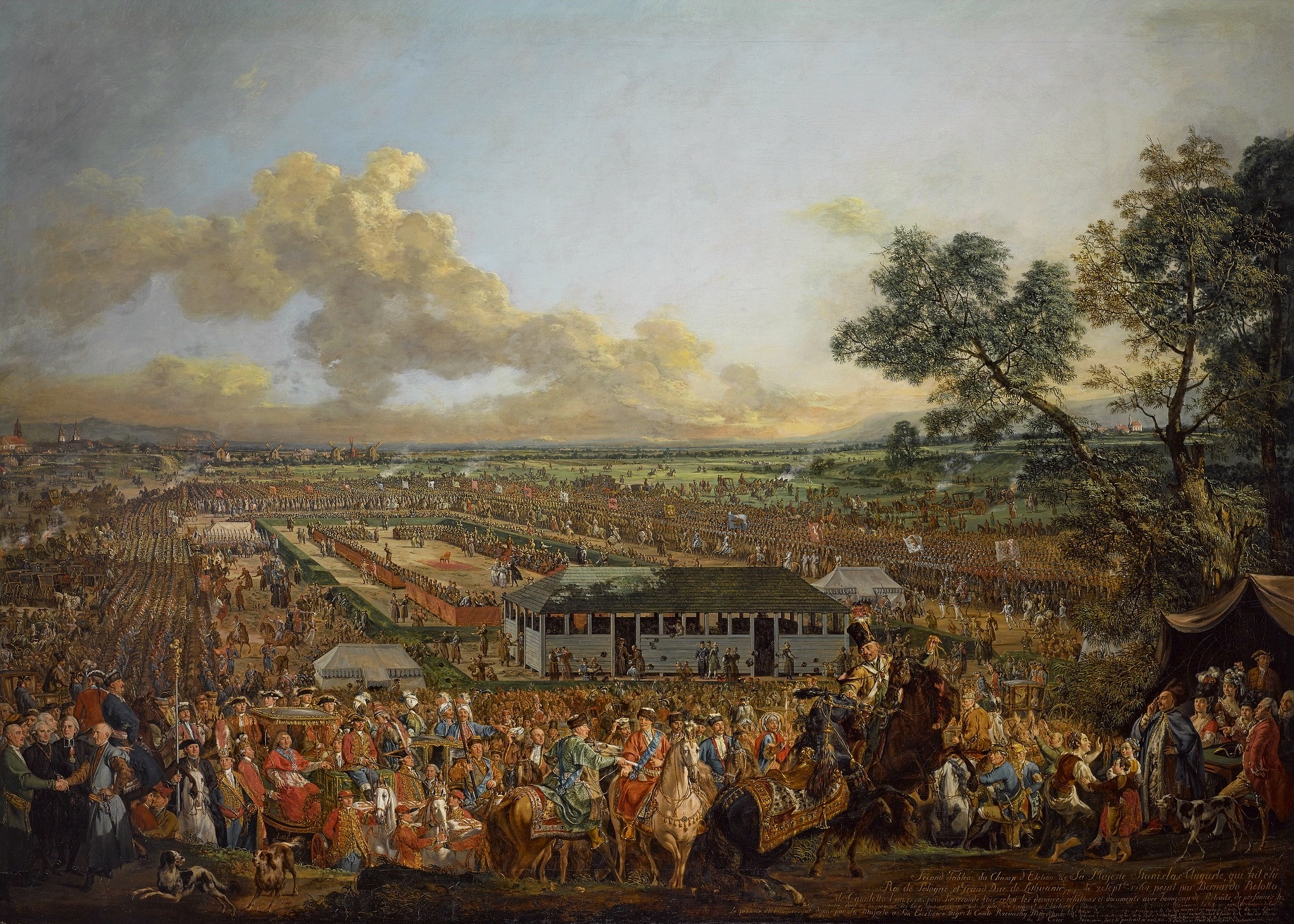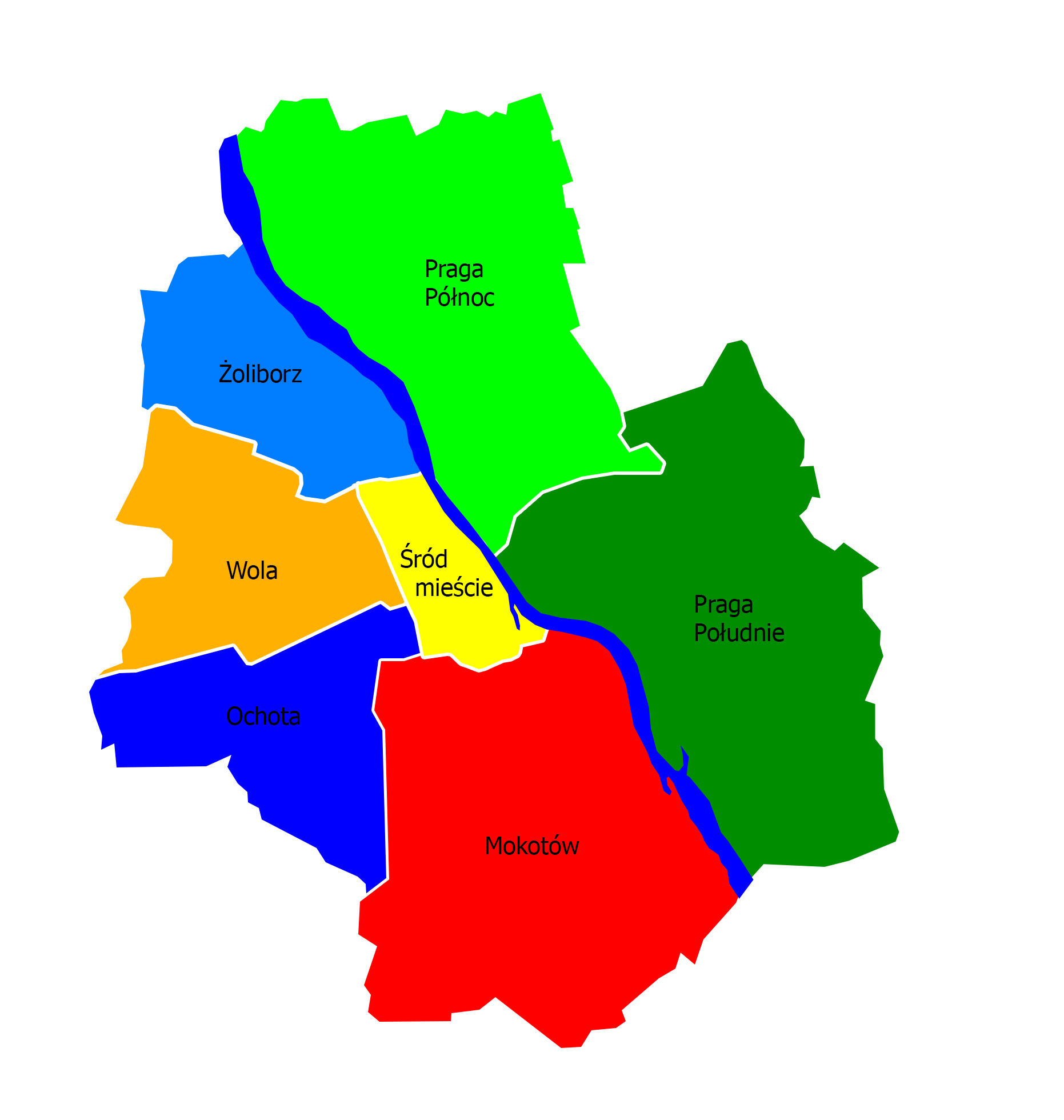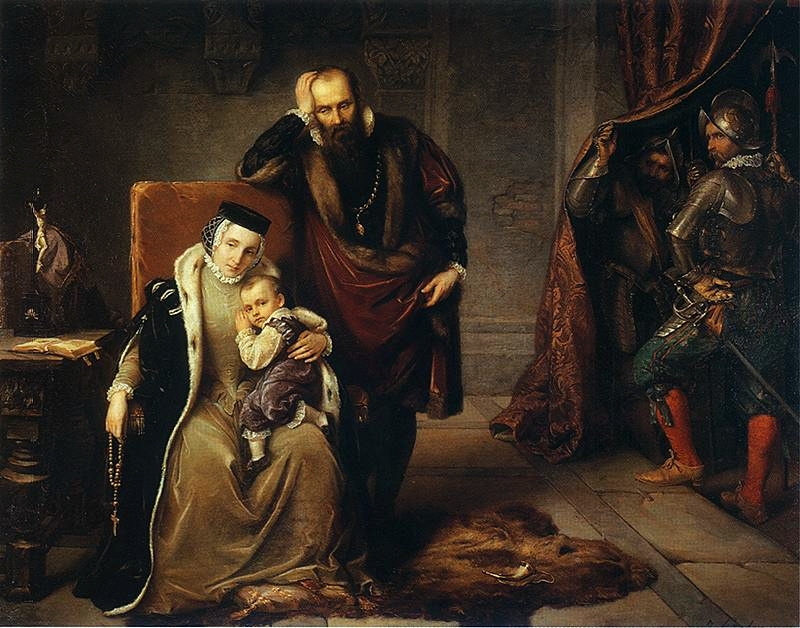|
Górce
is a neighbourhood and City Information System area in the Bemowo district of Warsaw, Poland. It is a high-rise residential area dominated by apartment buildings. The neighbourhood features the Bemowo station of the M2 line of the Warsaw Metro rapid transit underground system. was founded prior to the 15th century, as a small farming community. It suffered significant damage from the Swedish army during the Second Northern War, recovering in the 17th century, and further developing in the 18th century. Between the 1920s and 1940s, the village became a suburb of Warsaw, with the development of single-family detached homes, and was incorporated into the city in 1951. In the 1980s, the housing estates of apartment buildings began being developed in the area. History , then a small farming community, was founded prior to the 15th century, and was at one point owned by a knight.Marek Wagner: ''Górce. Historia i pamiątki''. Warsaw: INFORTeditions, 2020. ISBN 9788365982711. (in ... [...More Info...] [...Related Items...] OR: [Wikipedia] [Google] [Baidu] |
Koło, Warsaw
Koło () is a neighbourhood and an area of the City Information System (Warsaw), City Information System in Warsaw, Poland, within the district of Wola. It is a residential area, with a mixture of single- and multifamily housing. History In 1575, the fields, currently within boundaries of neighbourhoods of Młynów, Warsaw, Młynów, Koło, and Powązki, were set up as the location for the proceedings of the Election sejm, election seym, during which nobility members elected the monarch of the Polish–Lithuanian Commonwealth. The first proceedings lasted from November to October 1575, when Anna Jagiellon and Stephen Báthory were chosen as the co-rulers. Between the 16th and 18th centuries, nine more rulers were chosen there. The last election was hosted in 1764, when Stanisław August Poniatowski was chosen as the ruler. The area of Koło, at the road leading from Warsaw to Sochaczew, became the location of the Kight Circle (), an assembly of szlachta, nobility members. It ga ... [...More Info...] [...Related Items...] OR: [Wikipedia] [Google] [Baidu] |
M2 (Warsaw)
The M2 line is the second line of the Warsaw Metro. It is currently long, has 18 stations and runs from Bródno metro station, Bródno neighborhood in Targówek district to the Bemowo metro station, Górce district in Bemowo. The planned line completion is in 2026, and will run from Targówek to Bemowo and number 21 stations. The route of the M2 metro line was confirmed in 2006. In 2007, a tender was announced for the completion of the central section of the route from Wola to Praga. In 2008, the tender was cancelled and a new one announced. In 2009, the new tender was complete and an agreement with the AGP Metro Polska consortium was signed. On 30 September 2014, the construction of the central section was complete and the final acceptance of the investment followed. The line opened on 4 March 2015. In 2014 a tender was announced for the first extension "3+3", consisting of the completion of three stations in the west and three stations to the east of the existing central sect ... [...More Info...] [...Related Items...] OR: [Wikipedia] [Google] [Baidu] |
List Of Districts And Neighbourhoods Of Warsaw
Warsaw is a city with powiat rights, and is further divided into 18 districts (''dzielnica'' ), auxiliary units which are legally integral parts of the city as an entity, but with some limited powers devolved to their own local governments (or ‘self-governments’ as they are typically referred to in Polish). The current division into quarters was established in 2002. The 18 districts are informally divided broadly into the inner and outer city quarters, as follows: *Inner city districts **Śródmieście **Mokotów **Ochota **Wola **Żoliborz **Praga Południe **Praga Północ *Outer city (or "wreath") districts **Bemowo **Białołęka **Bielany **Rembertów **Targówek **Ursus **Ursynów **Wawer **Wesoła **Wilanów **Włochy Districts of Warsaw Neighbourhoods Each of the districts is customarily subdivided into several smaller areas, known under the designation of a neighbourhood (''osiedle (Polish plural: ) is a term used in Poland to denote a designated subdivisi ... [...More Info...] [...Related Items...] OR: [Wikipedia] [Google] [Baidu] |
Bemowo
Bemowo is a district of Warsaw located in the western part of the city. Its territory covers the western belt of the former district of Wola Wola () is a district in western Warsaw, Poland. An industrial area with traditions reaching back to the early 19th century, it underwent a transformation into a major financial district, featuring various landmarks and some of the tallest offi ..., which was incorporated to Warsaw in the year 1951. The name of the district derives from the surname of General Józef Bem. Neighbourhoods within the district * Lotnisko * Fort Radiowo * Boernerowo * Bemowo Lotnisko * Fort Bema * Groty * Górce * Chrzanów * Jelonki Północne * Jelonki Południowe Twin towns – Sister cities Bemowo is twinned with: * Óbuda-Békásmegyer (Budapest), Hungary References External linksThe official website of BemowoA local info-website [...More Info...] [...Related Items...] OR: [Wikipedia] [Google] [Baidu] |
Districts And Neighbourhoods Of Warsaw
Warsaw is a city with powiat rights, and is further divided into 18 districts (''dzielnica'' ), auxiliary units which are legally integral parts of the city as an entity, but with some limited powers devolved to their own local governments (or ‘self-governments’ as they are typically referred to in Polish). The current division into quarters was established in 2002. The 18 districts are informally divided broadly into the inner and outer city quarters, as follows: *Inner city districts **Śródmieście **Mokotów **Ochota **Wola **Żoliborz **Praga Południe **Praga Północ *Outer city (or "wreath") districts **Bemowo **Białołęka **Bielany **Rembertów **Targówek **Ursus **Ursynów **Wawer **Wesoła **Wilanów **Włochy Districts of Warsaw Neighbourhoods Each of the districts is customarily subdivided into several smaller areas, known under the designation of a neighbourhood (''osiedle''), a unit with no legal or administrative powers, used for statistics or as a de ... [...More Info...] [...Related Items...] OR: [Wikipedia] [Google] [Baidu] |
Warsaw
Warsaw, officially the Capital City of Warsaw, is the capital and List of cities and towns in Poland, largest city of Poland. The metropolis stands on the Vistula, River Vistula in east-central Poland. Its population is officially estimated at 1.86 million residents within a Warsaw metropolitan area, greater metropolitan area of 3.27 million residents, which makes Warsaw the List of cities in the European Union by population within city limits, 6th most-populous city in the European Union. The city area measures and comprises List of districts and neighbourhoods of Warsaw, 18 districts, while the metropolitan area covers . Warsaw is classified as an Globalization and World Cities Research Network#Alpha 2, alpha global city, a major political, economic and cultural hub, and the country's seat of government. It is also the capital of the Masovian Voivodeship. Warsaw traces its origins to a small fishing town in Masovia. The city rose to prominence in the late 16th cent ... [...More Info...] [...Related Items...] OR: [Wikipedia] [Google] [Baidu] |
Sochaczew
Sochaczew () is a town in central Poland, with 33,456 inhabitants (as of 2023). In the Masovian Voivodeship (since 1999), formerly in Skierniewice Voivodeship (1975–1998). It is the capital of Sochaczew County and is located approximately west from the capital of Poland Warsaw Sochaczew has a narrow-gauge railway museum with a line that runs as far as Wilcze Tułowskie. 750 mm-gauge steam trains run on the line on Saturdays from spring to the end of summer. History Sochaczew was first mentioned in documents from 1138, when the Duke of Poland Bolesław III Wrymouth died at a local Order of Saint Benedict, Benedictine monastery. By 1221 Sochaczew had already been an important center of administration, and a seat of a castellan, who lived in a defensive Gord (archaeology), gord. The town prospered due to its location at the intersection of main merchant routes (from Kalisz to Ciechanów, and from Warsaw to Poznań). In the first half of the 13th century, construction of two c ... [...More Info...] [...Related Items...] OR: [Wikipedia] [Google] [Baidu] |
Młynów, Warsaw
Młynów () is a neighbourhood of the western borough of Wola in Warsaw, the capital of Poland. History Since late Middle Ages the area of modern Młynów belonged to the nearby village of Wielka Wola. Initially mostly occupied by arable land, in 1792 the Evangelical Cemetery of the Augsburg Confession was founded there. Soon afterwards additional cemeteries were built nearby: Christian Powązki Cemetery and the Okopowa Street Jewish Cemetery (both in modern times located in the neighbourhood of Powązki). In the 19th century the rapidly growing city swallowed Wola and its fields, located right outside the city limits were a convenient location for numerous windmills, which became the namesake for the entire area: Młynów's literal translation is "Place of Mills". Opening of the Warsaw–Vienna railway saw many granaries constructed there as well. During World War I, in 1916 Młynów, along with the rest of the suburb of Wola, was incorporated into the city of Warsaw. During ... [...More Info...] [...Related Items...] OR: [Wikipedia] [Google] [Baidu] |
Polish–Lithuanian Commonwealth
The Polish–Lithuanian Commonwealth, also referred to as Poland–Lithuania or the First Polish Republic (), was a federation, federative real union between the Crown of the Kingdom of Poland, Kingdom of Poland and the Grand Duchy of Lithuania, existing from 1569 to 1795. This state was among the largest, most populated countries of 16th- to 18th-century Europe. At its peak in the early 17th century, the Commonwealth spanned approximately and supported a multi-ethnic population of around 12 million as of 1618. The official languages of the Commonwealth were Polish language, Polish and Latin Language, Latin, with Catholic Church, Catholicism as the state religion. The Union of Lublin established the Commonwealth as a single entity on 1 July 1569. The two nations had previously been in a personal union since the Union of Krewo, Krewo Agreement of 1385 (Polish–Lithuanian union) and the subsequent marriage of Queen Jadwiga of Poland to Grand Duke Jogaila of Lithuania, who was cr ... [...More Info...] [...Related Items...] OR: [Wikipedia] [Google] [Baidu] |
Election Sejm
Election sejm (; ) was one of three kinds of special general sejm in pre-partition Polish–Lithuanian Commonwealth. Upon vacancy of the throne, the election sejm, meeting at Wola outside Warsaw, elected a new king. Any hereditary nobleman could vote in the Election Parliament, if present. Often close to 100,000 nobles came to those sejms. The other two kinds of special sejm—likewise concerned with the filling of the throne—were the " convocation sejm" and the " coronation sejm." References Further reading * See also * Royal elections in Poland Royal elections in Poland ( Polish: ''wolna elekcja'', lit. ''free election'') were the elections of individual kings, rather than dynasties, to the Polish throne. Based on traditions dating to the very beginning of the Polish statehood, streng ... Sejm of the Polish–Lithuanian Commonwealth {{Europe-election-stub ... [...More Info...] [...Related Items...] OR: [Wikipedia] [Google] [Baidu] |
War Of The Polish Succession (1587–1588)
The War of the Polish Succession or the Habsburg-Polish War took place from 1587 to 1588 over the election of the successor to the King of Poland and Grand Duke of Lithuania Stephen Báthory. The war was fought between factions of Sigismund III Vasa and Maximilian III, with Sigismund eventually being crowned. Two major battles of this conflict included the Siege of Kraków, in which Maximilian III failed to capture the capital of the Commonwealth, and the Battle of Byczyna, in which Maximilian was forced to surrender. Sigismund's victory was significantly the doing of Chancellor and Hetman Jan Zamoyski, who stood behind both the political intrigue and the military victories of this conflict. Background In 1586, following the death of the previous Polish king, Stefan Batory, the Swedish crown prince Sigismund III Vasa and Habsburg Maximilian III, Archduke of Austria, took part in the election to the joint Polish–Lithuanian throne. Each of the two candidates had supporter ... [...More Info...] [...Related Items...] OR: [Wikipedia] [Google] [Baidu] |
Sigismund III Vasa
Sigismund III Vasa (, ; 20 June 1566 – 30 April 1632 N.S.) was King of Poland and Grand Duke of Lithuania from 1587 to 1632 and, as Sigismund, King of Sweden from 1592 to 1599. He was the first Polish sovereign from the House of Vasa. Religiously zealous, he imposed Catholicism across the vast realm, and his crusades against neighbouring states marked Poland's largest territorial expansion. As an enlightened despot, he presided over an era of prosperity and achievement, further distinguished by the transfer of the country's capital from Kraków to Warsaw. Sigismund was the son of King John III of Sweden and his first wife, Catherine Jagiellon, daughter of King Sigismund I of Poland. Elected monarch of the Polish–Lithuanian Commonwealth in 1587, he sought to unify Poland and Sweden under one Catholic kingdom, and when he succeeded his deceased father in 1592 the Polish–Swedish union was created. Opposition in Protestant Sweden caused a war against Sigismund headed ... [...More Info...] [...Related Items...] OR: [Wikipedia] [Google] [Baidu] |






